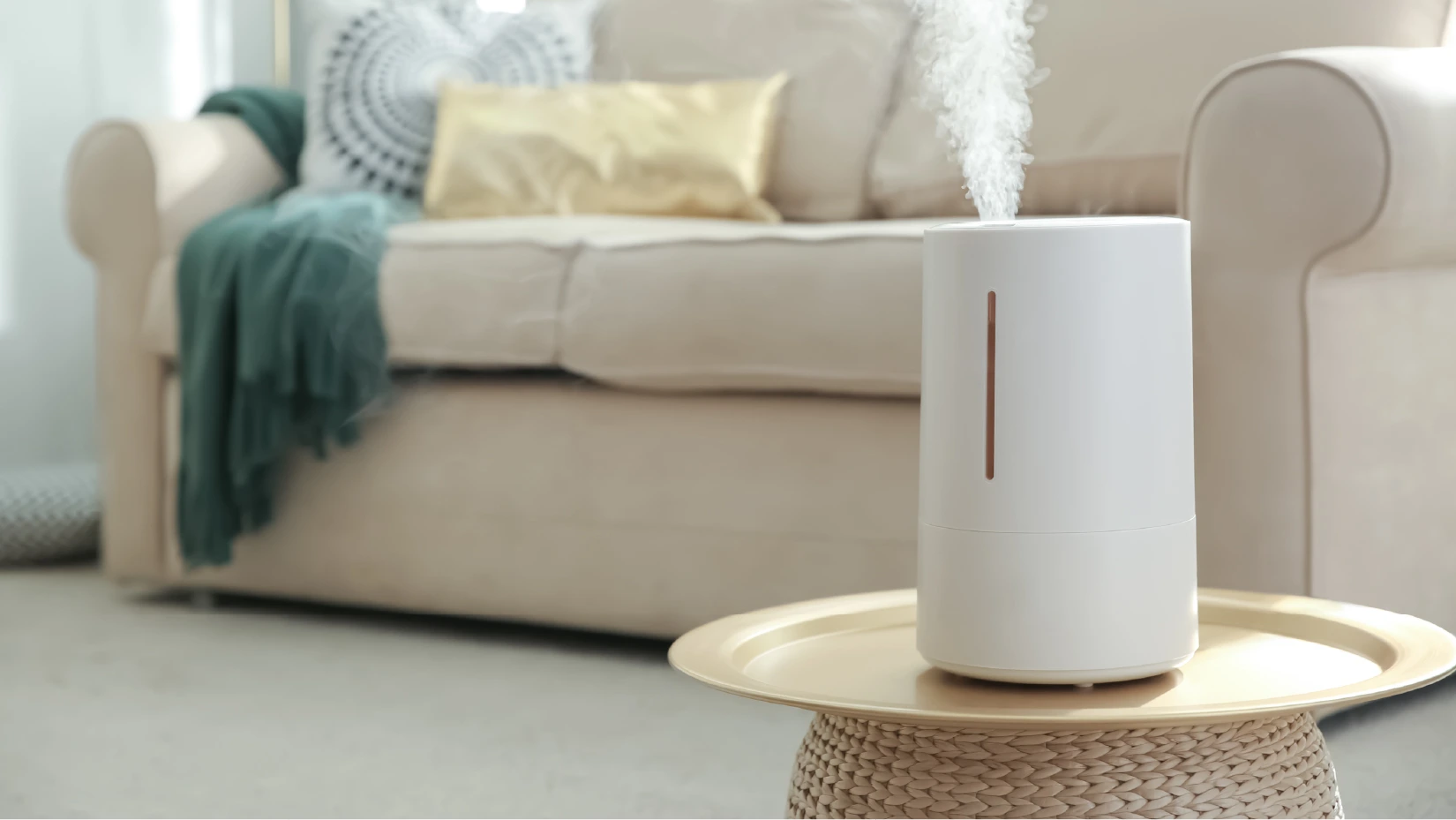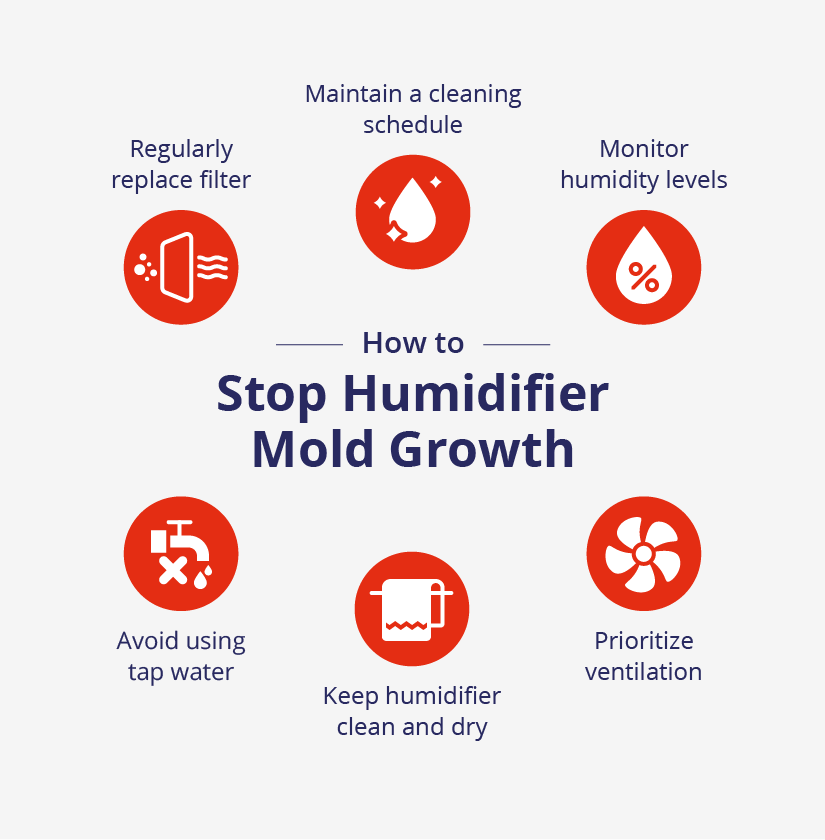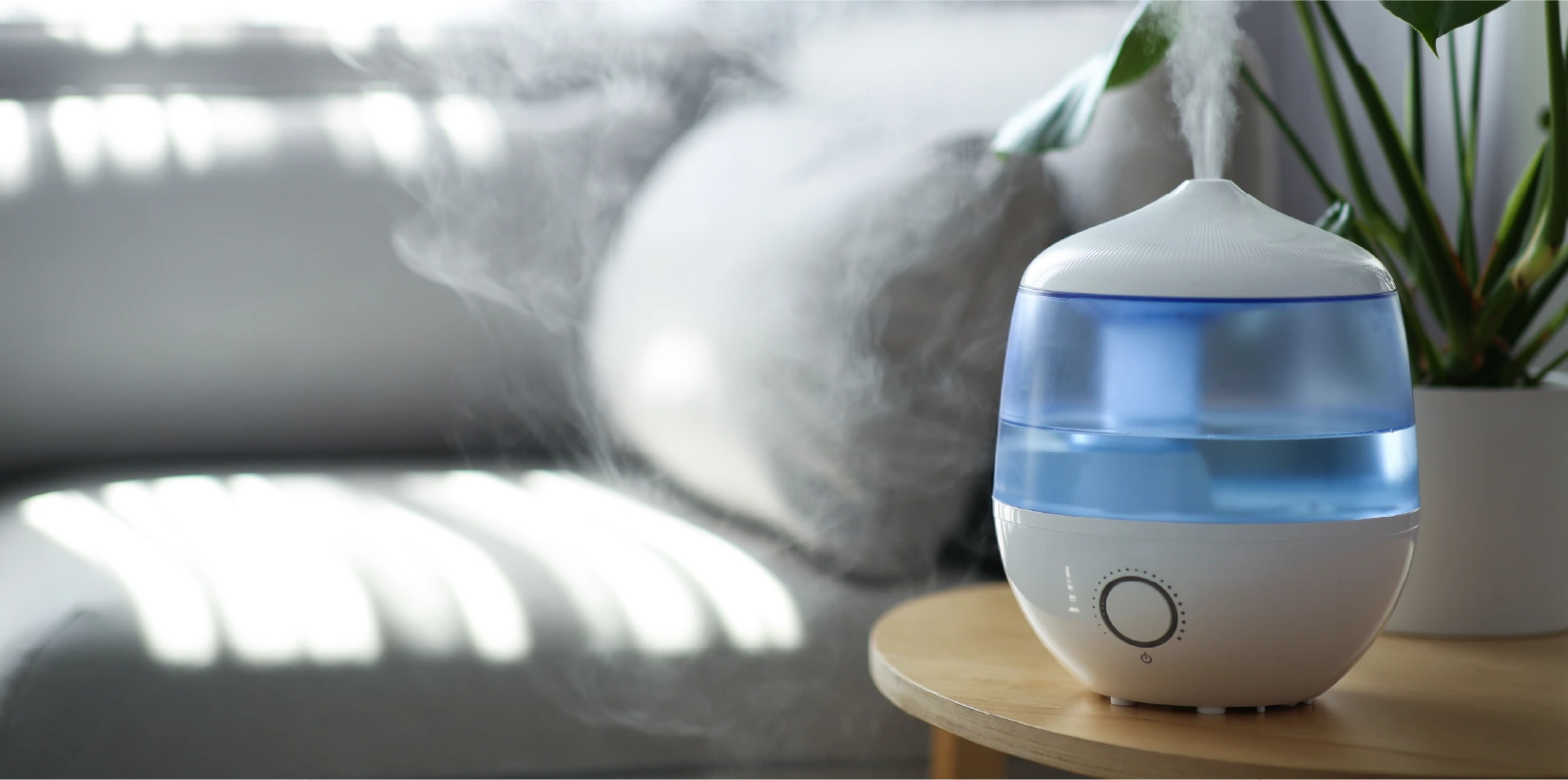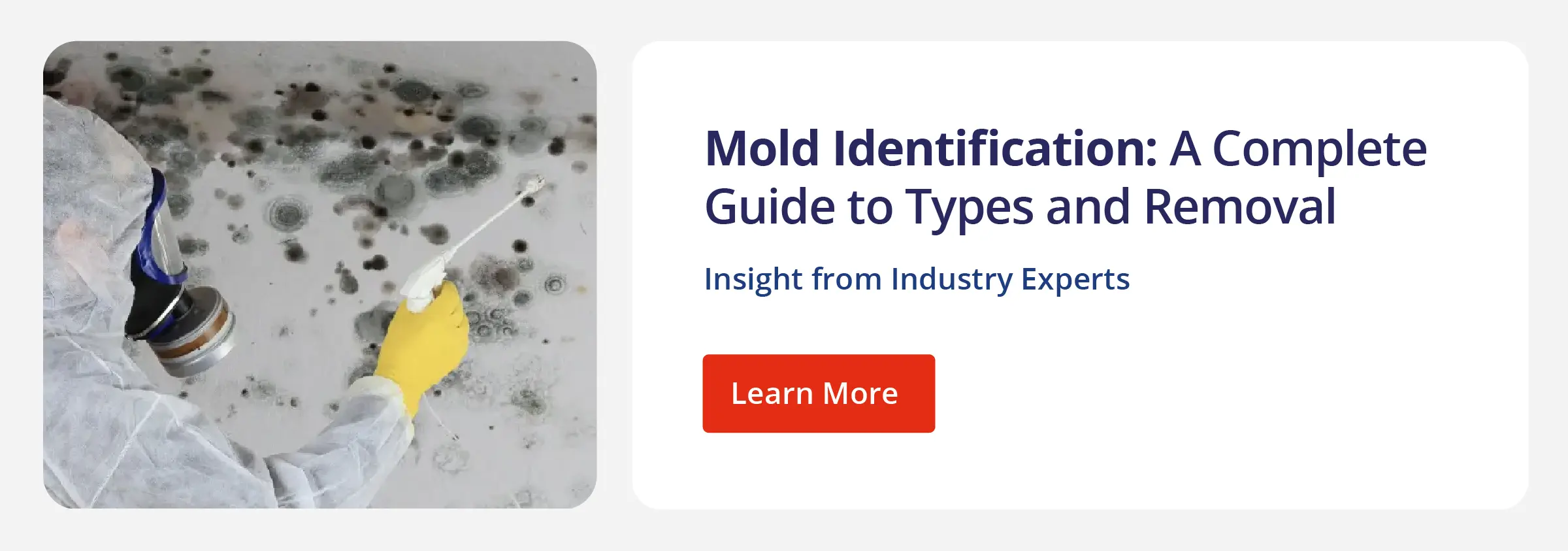
Humidifiers can develop mold and cause mold to spread. To prevent mold growth, maintain a regular cleaning schedule, monitor a property’s humidity levels, prioritize ventilation, use distilled water instead of tap, and maintain the humidifier’s filter.
For people living in dry climates, a humidifier may be a necessary, everyday appliance. Low humidity levels can affect the eyes, throat, and skin, increasing allergy symptoms and affecting immune systems. Using a humidifier can ease some of these symptoms and provide relief during drier months.
Despite their upsides, there’s one question worth asking: Can humidifiers cause mold? Improper humidifier use can cause damage to commercial and residential properties — no matter the intentions. To avoid the need for damage restoration services, learn the signs of mold in a humidifier, tips for preventing mold growth, how to clean the appliance, and more.
Do Humidifiers Cause Mold?
Humidifiers don’t cause mold, but they can develop mold. If a humidifier is not properly maintained, it can increase the likelihood of mold growth in a space because it increases humidity. However, despite being an ideal appliance for mold growth, it’s possible to prevent mold development by maintaining a regular cleaning schedule and monitoring an area’s humidity levels.
4 Signs of Mold in a Humidifier
Even with a strict cleaning schedule and monitoring an appliance’s use, any humidifier can develop mold. To identify mold growth, look for these four signs:
- Visible mold growth: Not all humidifier mold is visible, but it’s still good to visually check for mold growth, which can be green, black, white, or pink.
- An earthy, musty smell: A musty smell surrounding the humidifier may indicate mold growth.
- Increased allergy symptoms: The release of mold spores can cause itchy eyes, sneezing, and other breathing issues for occupants.
- Discolored water: Mold may grow on top of the water in a humidifier’s water reservoir. This will discolor or cloud the water and give it a slimy texture.
6 Tips for Preventing Mold in a Humidifier
Poor air quality can negatively affect overall health. If a humidifier has developed mold, mold spores can travel through a property and colonize other areas. To stop the spread of mold and protect everyone’s health, follow these six tips to prevent mold from developing in a humidifier.

1. Maintain a Cleaning Schedule
To minimize mold development, maintain a consistent cleaning schedule. If possible, deep clean the appliance weekly while rinsing, towel-drying, and replacing the tank’s water daily. If occupants experience any signs or symptoms of mold growth, consider deep cleaning more frequently.
2. Monitor Humidity Levels
According to the Environmental Protection Agency (EPA), humidity levels should be kept below 60% for commercial and residential properties. Optimal levels hover between 30% and 50%, which discourages mold growth and pests from infecting a property.
3. Keep the Humidifier Clean and Dry
Rooms with humidifiers are more likely to experience condensation and damp conditions. This condensation often affects the area around the appliance, which can become a breeding ground for mold spores if left untreated.
Avoid placing a humidifier directly on a porous surface like a carpet or towel. Regularly check the area around a humidifier and dry or move the appliance to another surface if necessary.
4. Prioritize Ventilation
To minimize moisture buildup, keep humidifiers in a well-ventilated area. Avoid closed-off rooms like bathrooms and kitchens, and keep vents open to encourage airflow. If necessary, open windows, turn on exhaust fans, and use air purifiers to encourage circulation.
5. Avoid Using Tap Water
Instead of using tap water in a humidifier, use distilled or demineralized water to reduce buildup and mold development. The minerals and bacteria found in tap water can encourage mold growth, while cleaner, mineral-free water discourages development.
It’s perfectly safe to use tap water to clean a humidifier, but only cycle distilled water through the appliance’s system when it’s in use.
6. Regularly Maintain the Filter
Not all humidifiers use filters, but the ones that do need regular maintenance. The appliance’s instruction manual should indicate how often to replace the filter, but it’s also best practice to rotate the filter each time the device is refilled. If unsure how often to replace the filter, it's a good idea to inspect and replace it every three to four months.
How To Clean a Humidifier
Proper care for a humidifier to keep it clean, dry, and mold-free requires sticking to a consistent cleaning schedule. On a weekly or biweekly basis, follow these eight deep-cleaning steps:
- Unplug and empty the humidifier.
- Pour white distilled vinegar into the base and let it stand for 10 to 15 minutes.
- Use a soft brush or sponge, soap, and water to scrub the surface of the humidifier while the base soaks. This should break up any visible buildup.
- Drain the vinegar.
- Rinse the base with water.
- Use a clean cloth to dry the interior and exterior.
- Use a different brush or sponge to clean the reservoir with soap and water until the vinegar scent fades.
- Rinse thoroughly and let air-dry.

FAQ About Humidifier Use
Frequently use a humidifier? Here are some common questions about whether or not it causes mold and how to prevent it.
Can a Humidifier Cause Mold in a Room?
While a humidifier doesn’t directly cause mold to grow in rooms, it can greatly impact the possibility of mold growth throughout a property. Increased humidity levels for extended periods can cause a higher likelihood of mold growth.
What Water Should I Use in My Humidifier?
It’s best to use distilled water that is also demineralized and purified in a humidifier. Do not use tap water in this appliance.
What Can You Put in a Humidifier To Prevent Mold?
To prevent mold in the humidifier, consider cleaning with hydrogen peroxide, distilled white vinegar, or humidifier tablets. These substances act as antibacterials and antifungals.
Can a Moldy Humidifier Make You Sick?
Moldy humidifiers can release tainted mist or steam into the air, which can cause flu-like symptoms. Dirty humidifiers can also cause and exacerbate lung illnesses and allergies.
Is It Healthy To Sleep With a Humidifier?
Running a clean, sanitized humidifier during sleep can be healthy. Optimal humidity levels can moisturize the skin, mouth, and throat. However, it’s important to carefully monitor the humidifier's output and keep humidity between 40% and 60% to minimize mold and bacteria growth.
Does a Humidifier Make a Room Damp?
Yes, humidifiers can make a room damp. When installed, used, or monitored improperly, humidifiers can cause condensation on a room’s surfaces, which leads to damp walls and other objects.
Remove Mold With Rainbow Restoration
So, can humidifiers cause mold? They can develop mold spores, cause contamination, and create ideal conditions for mold development, but they don’t specifically cause mold. If it seems there’s mold on your property, schedule a consultation for residential mold removal and remediation services from Rainbow Restoration® today.
This article is intended for general informational purposes only and may not be applicable to every situation. You are responsible for determining the proper course of action for your property. Services should be performed by licensed and experienced professionals. Rainbow Restoration is not responsible for any damages that occur as a result of this blog content or your actions. For the most accurate guidance, contact a Rainbow Restoration professional for a custom, on-site assessment.

